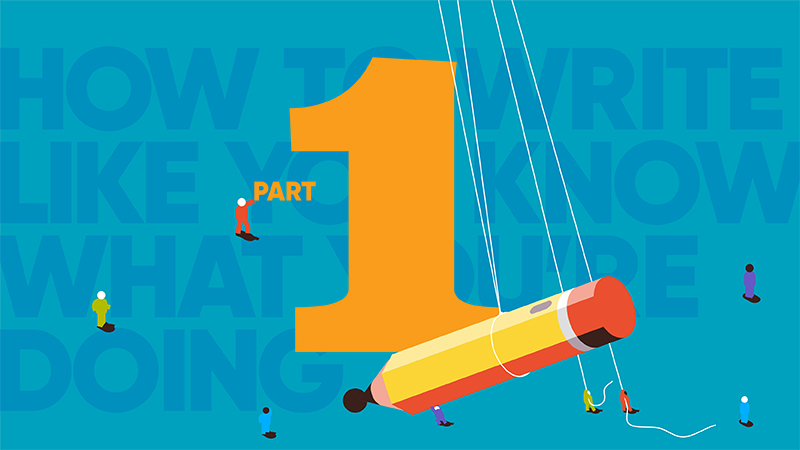As a professor at one of America’s top public universities, I’m surrounded by students who represent the “millennial generation.” Born between 1982 and 2003 and also referred to as generation Y, millennials (75.3MM) surpassed baby boomers (74.9MM) in 2015 as the largest generational cohort in American history. Even though millennials’ attitudes, values and behaviors have been studied extensively, I am frequently surprised by the pejorative intention both employers and educators ascribe to the moniker “millennial.”
In their book Millennials Rising: The Next Great Generation (Strauss and Howe, 2000), the authors describe millennials as “Idealists-in-the-making…powerfully shaped by parental reaction to the perceived laxness of the Sixties and Seventies. Put another way, the rise of cultural and political conservatives in the U.S. was the most formative context of their upbringing.” Moreover, Strauss and Howe identified seven distinguishing traits of the millennial generation: (1) special; (2) sheltered; (3) confident; (4) team-oriented; (5) achieving; (6) pressured; and (7) conventional.
We’ve probably all seen a comedic parody on millennials from the baby boomer point of view that exaggerates one or several of these distinguishing traits. One of the most viewed of these, “How To Train Your Millennial,” spoofs four of the most commonly reported workforce needs of millennials to keep them from quitting: praise, flexibility, achievement and work-life balance. Like all good humor, there’s an element of truth to these parodies, but by and large in real life and especially in my teaching experience, supplicating millennials with a thin veneer of praise, flexibility, etc., to appease does not inspire the potential greatness within them. And they want to be great. If we want to help these ambitious, confident, optimistic idealists truly become great, than educators and employers should strive to create an educational adaptation that balances content with real-world context.
I’ve discovered four successful and practical strategies for balancing content with real-world context:
1. Overestimate the Need for Clarity and Transparency
In 1985, the average length of an undergraduate syllabus for an upper-level marketing course was six pages; in 2012 it was 19. You may imagine that with this level of course detail and specificity that millennial students have order and clarity, but surprisingly one of the most often cited topics in student course evaluations is lack of clarity. Even in my own courses, where the syllabus is 24 pages long, detailed guidelines of course assignments are posted in advance AND I encourage students to query both me and my TA via both online and in-class, I still receive a few comments every semester about the lack of clarity on course evaluations. Two of the millennial distinguishing characteristics—achieving and sheltered—exacerbate the need for clarity.
Although it would be easy to dismiss the obsessive need for clarity as a weakness, it’s important to remember that the objective-driven, end-of-course multiple choice learning environments of nearly all high schools in the U.S. have trained millennials that a perfectly predictable, highly structured course is necessary to achieve a successful grade. When millennial students were asked what constituted “perfect clarity” in providing case assignments, which is a common application-oriented learning tool used in marketing courses at the university level, answers ranged from “give me a checklist” to “give me short-answer questions” to “give me a multiple-choice quiz on the material.” Our own education system has created millennials who not only experience extreme discomfort whenever they encounter ambiguity, but also believe that objective-driven structure is the only way to learn and be tested. The travesty is that while millennials may be able to eschew ambiguity in college, many will be unable to avoid it in entry-level marketing, communications and business positions.
Three tactics I have used to ostensibly narrow the clarity gap are: 1) have an open forum with students about clarity versus ambiguity; 2) set clear expectations that the course is a crucible of the level of detail provided for assignments by real-world supervisors and clients; and 3) provide, where appropriate, benchmark examples of assignments.
2. Invite Students to Participate in Elements of Course
I think two of the two most valuable distinguishing traits of millennials are their confidence and team-orientation. Devoted parents pushed and prodded millennials with a multitude of lessons, camps, field trips, internships and even foreign travel to enrich and enhance creativity and ingenuity, which actually turned out to be a benefit in a global, social, collaborative world.
Nearly a decade ago, when I first started teaching millennials, to my detriment I rarely took advantage of these two distinguishing traits. I designed and delivered the course, assignments and grading without incorporating participation or involvement by millennials. Unlike the mantra “if you build it they will come” from the 1989 movie Field of Dreams, the level of student interaction and engagement were well below my (high) expectations. Without lofty levels of interaction and engagement, I knew that I was not providing enough real-world context to better prepare them for future careers.
Three approaches I have used that have dramatically increased interaction and engagement through opportunities to participate and express their creativity and ingenuity are 1) to give choice in assignments (e.g., pick three of the five case assignments); 2) to work on most assignments in small teams (with peer evaluation sheets); and 3) replace the final exam with a final group project that incorporates all the cumulative learning from the entire semester. It’s worth noting that some of my colleagues have also incorporated a system of student input on grading rubrics. While I have not yet incorporated this strategy in teaching millennials, it is a strategy I am evaluating for potential future use. Admittedly, these strategies often generate more work for the instructor as it is easier to grade a multiple-choice test versus a semester-long group project, but the significant gain in interaction and engagement are well worth the additional work.
3. Create Ways for Students to Manage and Reduce Stress
Combine the three distinguishing traits of being special, achieving and being pressured and it’s no surprise that millennials often feel extremely stressed and certainly more so than previous generations. My colleagues and I regularly have students report that they are “stressed out” by the demands of having weekly deadlines and assignments. Strauss and Howe called this phenomenon the “…trophy kid pressure to excel” (2000, p. 44), and it’s evident in recent research by Edison Media who found that four in 10 college students felt stress “often” and nearly one in five say they feel stressed out “all or most of the time,” with seven in 10 students ascribing their stress to “school work and grades” (MSNBC.com, 2008, n.p.a). It’s no wonder psychologist and author Jean M. Twenge has labeled millennials “Generation Stressed” (2006, p. 104).
To help millennials manage and reduce stress in my courses I’ve incorporated three constructs and processes to 1) divide my course into manageable modules; 2) allow students to check grades at any time and provide quarterly grade reports; and 3) incorporate humor and optimism in ALL my lectures. It’s also important to note that I have reduced the amount of weekly pre-work in both of my courses over the last decade. Reducing content to just the bare essentials, which allows for easier, thoughtful processing, enables students to better apply the concepts to case assignments and final projects.
4. Delineate Effort Versus Excellence
Both of my courses include a participation component as part of final grades. Even though the points earned for participation are graded on the quality of student participation and are clearly explained in the syllabus, I still have students seek me out at the end of each semester to appeal for a grade rise because they believed that coming to class or taking up “air time” to answer questions in class (effort) was the equivalent to qualified, value-added participation (excellence). The combination of special, sheltered and conventional distinguishing traits often yields confusion among millennials that effort is the same as excellence. This is by far the most difficult teaching strategy to overcome because most millennials don’t know the difference. Very likely originating with the practice that “everybody gets a trophy” for children’s sport participation rather than the traditional recognition of exceptional contributions, our cultural perceptions have been favoring effort over excellence for more than a decade.
I use two teaching expectations to help millennials begin to distinguish effort from excellence. First, at the beginning of the semester I ask students to write a letter in detail how they will earn the “A” on all course components through the entire semester. This simple exercise, taken from The Art of Possibility (Rosamund and Benjamin Zander, 2002) enlivens action and helps students begin to understand the difference between effort and excellence.
The second strategy is to reduce the number of pages allowed for individual and group assignments to three (double space) with a maximum six pages of appendices. This has two benefits. First, it forces millennials to succinctly discuss only the most essential elements of the assignment and omit the superfluous—which will be useful when they enter the workforce. Second, it enables more fair and transparent grading as I am only giving credit for scant few identified insights, recommendations and conclusions.
At the conclusion of every lecture I tell my students to “go do great things,” knowing full well that they are uniquely capable of doing so.
Millennials can very well become the next “Great Generation” (Gerber and Wilson, 2008) if educators are willing to adapt and incorporate these four strategies and related tactics. Rather than giving in to grade inflation or other attempts to make college “easy,” it’s important that we prepare millennials for entry into the workforce to succeed in the face of challenges they will encounter post-graduation. Recently, I asked a millennial graduate student of mine to share with me the one thing she wished her previous employer would have done to enhance her learning experience at the firm. Interestingly, she said her work was boring, repetitive and she wished that she would have been challenged so that she could have proven her worth and subsequently earned the opportunity to take part in more meaningful projects.
At the conclusion of every lecture I tell my students to “go do great things,” knowing full well that they are uniquely capable of doing so. By using the four strategies and related tactics to balance content and real-world context, we can inspire millennials to be great. My only hope is that we will.



